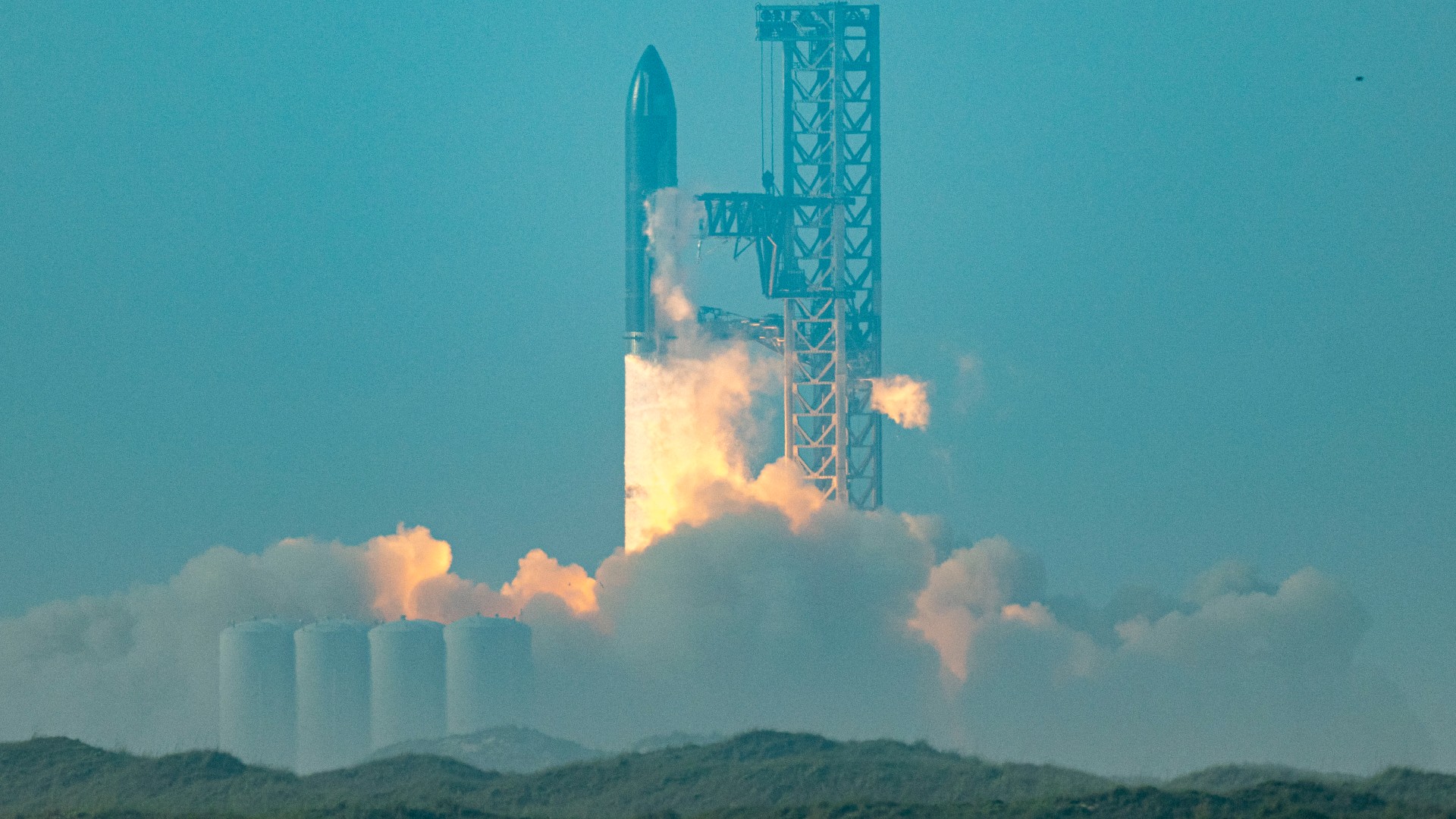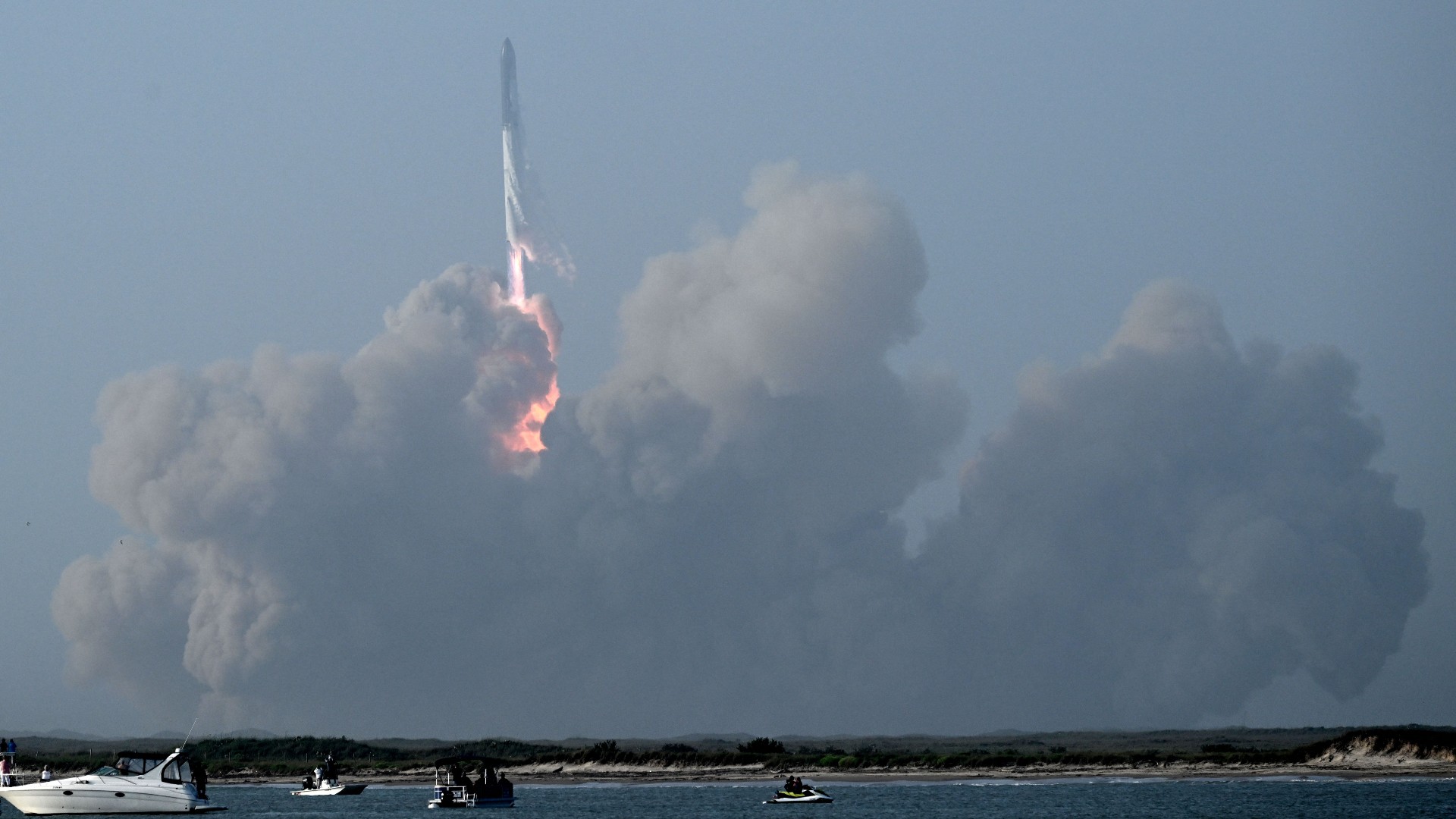SpaceX celebrated Starship's 1st launch. Some locals called it 'truly terrifying'
The debris at the launchpad and from the rocket's mid-air explosion is widespread, to say the least.

The world's largest, most powerful rocket caused some serious mayhem during its first launch.
SpaceX's massive fully-integrated Starship launch vehicle lifted off from SpaceX's Starbase test facility in Boca Chica, Texas on April 20 at 9:33 a.m. EDT (1333 GMT; 8:33 a.m. local Texas time). Starship then flew for just over four minutes on its first orbital test flight — complete with somersaults — before automated systems initiated a destructive abort procedure and caused the rocket to explode.
The success of Starship even clearing its launch tower indicates significant headway for SpaceX, which is known for sometimes destroying its vehicle prototypes in the name of progress. In SpaceX's infancy, CEO Elon Musk could been seen strolling through fields of fallen rocket debris, but there's no chance anyone will be traversing the scope of what Starship left behind without at least a helicopter. Dust and debris from the launch was sent flying, sometimes for miles, creating concerns for some local residents.
Related: What's next for SpaceX's Starship after its historic flight test?
One resident of Port Isabel, Texas, just 6 miles north of Starbase, called the noise and debris created by the launch "truly terrifying," the New York Times reported. Other Port Isabel residents reported broken windows, and some described it as "like a mini earthquake." NPR journalist Pablo De La Rosa also posted reports of particles from Starship's launch raining down on residents.
According to a City of Port Isabel Facebook post, it has been confirmed that the spray of Starship detritus that covered locals' cars and homes posed no health risk, and was in fact sand and dust lofted airborne and thrown miles in every direction by the rocket's liftoff.
Closer to ground zero, the 33 engines of the rocket's main booster left a literal crater in the concrete at Starship's launch pad. Debris large enough to crush a car was sent flying in every direction, and while the tower was left standing, the launch complex is in need of some major clean up efforts.
Breaking space news, the latest updates on rocket launches, skywatching events and more!
Images from RGV Aerial Photography and Spaceflight Now show construction materials and pieces of old Starship builds strewn across the surrounding area, and VR video from twitter user @LabPadre, which was enlarged by DaneWang, show a NASA Spaceflight van getting mangled by the flying rubble.
Debris at 25% speed...@NASASpaceflight @elonmusk #StarshipLaunch #SpaceX pic.twitter.com/8TzLlNLHCLApril 20, 2023
Beyond Starbase, debris from Starship spread for miles over the Gulf of Mexico. In one of SpaceX's videos of the launch shared on Twitter, large pieces of debris can be seen splashing into the ocean alongside the pad just seconds after the massive rocket begins to lift off.
Liftoff from Starbase pic.twitter.com/rgpc2XO7Z9April 20, 2023
When Starship exploded four minutes into its flight, the resulting detonation was so massive, it was picked up on doppler radar systems.
More 3d imagery of the debris of #Starship clearly visible on doppler radar over the Gulf of Mexico. #Spacex pic.twitter.com/KRk81cdd9cApril 20, 2023
Similar to NASA's Kennedy Space Center in Florida, SpaceX's Starbase complex sits on a national wildlife refuge home to over 2,500 different species of plants and animals. Wildlife areas like this are good pairs for spaceport activities, as rocket launches require a lot of breathing room to adhere to safe-distance requirements, and because measures taken during typical launches largely mitigate any adverse effects on local fauna and flora.
In fact, prior to Starship's first launch, SpaceX received a 183-page environmental safety notice from the Federal Aviation Administration (FAA) outlining over 75 mitigative steps the company needed to take to ensure Starship's launch license be granted.
Now, with a whole town covered in rocket launch remnants, some residents of South Texas are questioning the impact Starship will have on its surroundings. Even before Starship got off the ground, a group of Rio Grande Valley residents and organizations released a unified brief in opposition to SpaceX's activities in the area. They claim SpaceX is "destroying wildlife refuges and sacred lands of the Carrizo Comecrudo Tribe of Texas and are threatening Rio Grande Valley communities with explosion risks."
Despite these concerns, Elon Musk stated the company is aiming for another launch of a fully integrated Starship in "1 to 2 months."
Follow us @Spacedotcom, or on Facebook and Instagram.

Josh Dinner is the Staff Writer for Spaceflight at Space.com. He is a writer and photographer with a passion for science and space exploration, and has been working the space beat since 2016. Josh has covered the evolution of NASA's commercial spaceflight partnerships and crewed missions from the Space Coast, as well as NASA science missions and more. He also enjoys building 1:144-scale model rockets and human-flown spacecraft. Find some of Josh's launch photography on Instagram and his website, and follow him on X, where he mostly posts in haiku.

